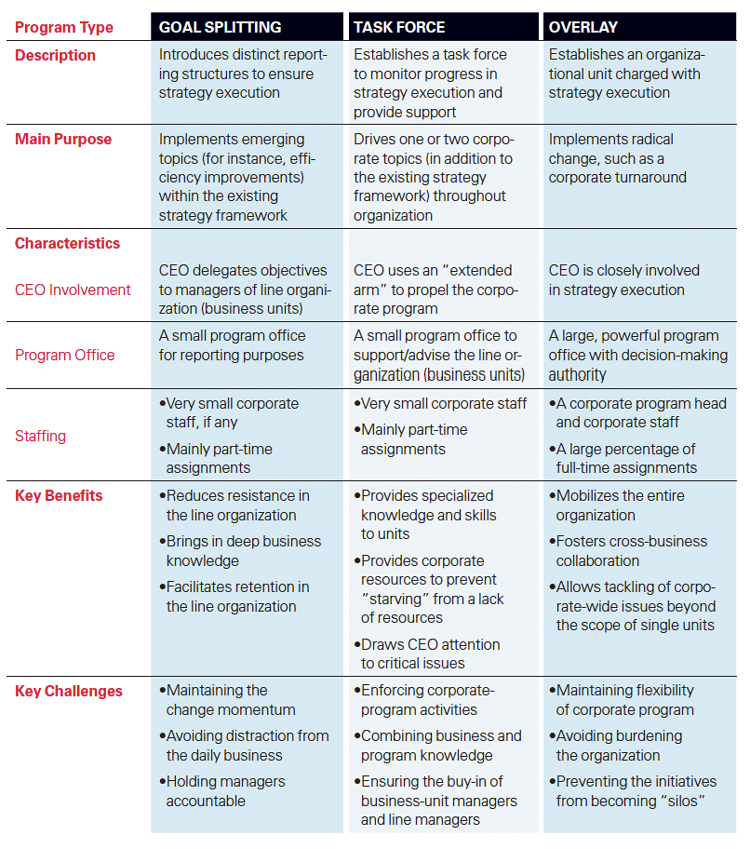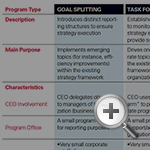Driving Change Through Corporate Programs
CEOs of large companies increasingly introduce corporate programs as a way to foster strategic renewal. Whether the goal is boosting profitability, improving business models or establishing new directions for growth, it’s important to match the design of the program with the desired outcomes.
In September 2012, Daimler CEO Dieter Zetsche announced a program called “Fit for Leadership.” Through this program, one of the world’s largest makers of luxury cars would attempt to cut annual costs by $1.3 billion.
Earlier in 2012, Christoph Franz, the CEO of Lufthansa, announced a program called “SCORE” — a program with the overall objective of further integrating Lufthansa’s businesses and realizing productivity gains of 1.5 billion ($1.99 billion) by the end of 2014.
And in 2011, Stephen Elop, the then-CEO of Nokia, announced a corporate program called “Transformation” — a program designed to reposition Nokia in the changing global mobile-devices market.
CEOs use such corporate programs as tools to communicate internally with their employees and to communicate externally with analysts or shareholders. They also employ them to introduce significant changes in their organizations and to foster changes in key dimensions of their businesses. As such, corporate programs act as key vehicles for strategic renewal. Furthermore, corporate programs play a major role in resource-allocation processes, as they require major investments in terms of management time and funding.
Three Types of Corporate Programs

But what happens after a corporate program is announced? How do CEOs deliver on their promises? Are there multiple, equally effective paths to success with a corporate program? These questions served as the starting point for our study of 125 corporate programs at large European organizations, including Allianz, Daimler, Nokia, SAB Miller, Telefónica and UBS. In a two-stage research project, we first conducted interview research with about 40 executives in charge of corporate programs at 17 large European companies. Using annual reports, press releases and investor presentations, we then conducted a quantitative study of 111 corporate programs in 75 European financial services firms over a 10-year period, in order to corroborate on a larger scale the insights gained from the interviews.
Our research indicates that CEOs use three very different designs for corporate programs, which we call goal splitting, task force and overlay.


 View Exhibit
View Exhibit



Comment (1)
tojoeapen